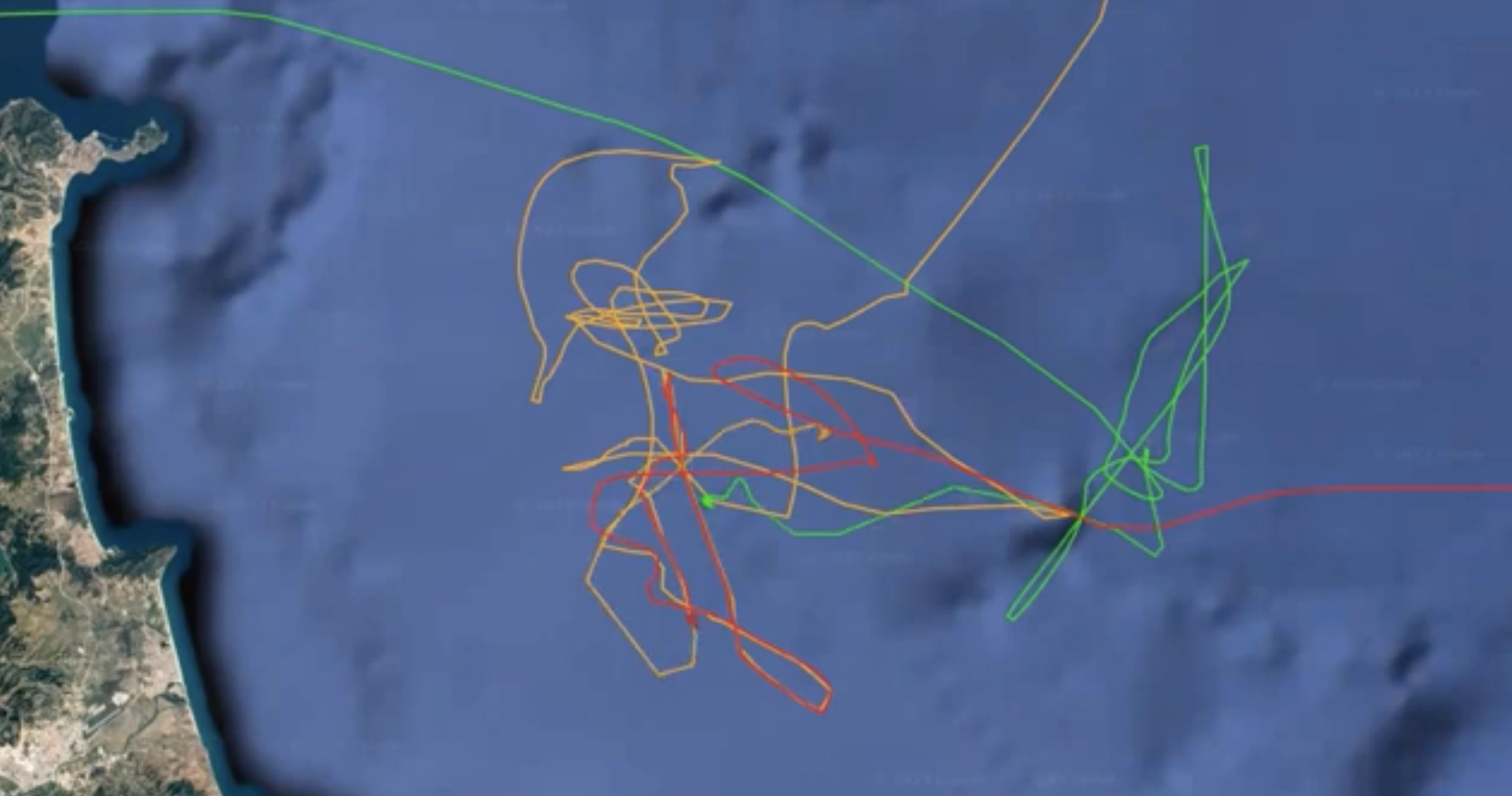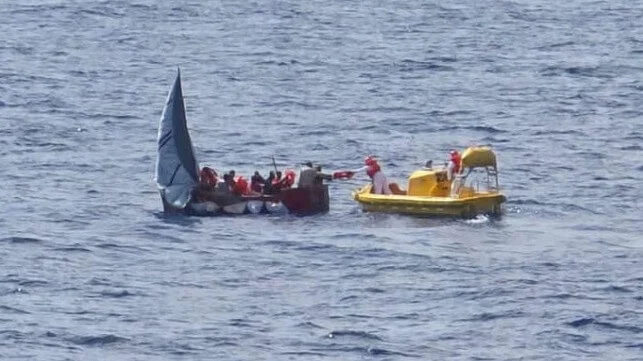Sanctions enforcement on a remote interaction with a once-Russian vessel sends a stern message
The Elephant (orange trackline) meets up with the ex-Russian tanker Nobel (red) off Ceuta, then joins Maersk Magellan (green) (Courtesy Pole Star)
In a sign of increasing regulatory interest in Russian ship-to-ship petroleum transfers, Spanish authorities have banned the tanker Maersk Magellan from unloading in Tarragona because she took aboard a cargo that had once been aboard a ship that was once flagged in Russia.
The captain of the port for Tarragona has banned Maersk Magellan from unloading her cargo of diesel, according to Spain’s federal Ministry of Transport, Mobility and Urban Agenda (MITMA), because the fuel was previously carried by the aging Cameroonian-flagged tanker Nobel. Until July 1, 2022, Nobel was the Russian-flagged tanker Neatis, owned by Moscow-based Rusprimeexport LLC; after the invasion of Ukraine, she was sold to a holding company in the Seychelles, renamed, and reflagged in Cameroon, according to her Equasis records. Under EU sanctions, any vessel that flew the Russian flag after February 24, 2022 is not allowed to deliver cargo in EU waters.
Singapore-flagged, Singapore-owned Maersk Magellan has no known historical ties to Russia, nor did she interact directly with the Nobel. However, according to MITMA, she took on a cargo from a third tanker, the Vietnamese-flagged Elephant, in an STS transfer near Ceuta. Upon inspection, Spanish authorities determined that the cargo from Elephant originally came from the tanks of the Nobel.
“After these verifications, the prohibition of access to the Port of Tarragona to the ship Maersk Magellan has been agreed for having breached the European regulations . . . that prohibit conscious and deliberate participation in activities whose purpose or effect is to circumvent [sanctions],” concluded MITMA.
AIS data provided by Pole Star confirms that the Nobel and the Elephant rendezvoused in the busy STS transfer zone off Ceuta on February 5, and they drifted close together until the morning of February 6. Later that afternoon, the Elephant met up with the Maersk Magellan, and their AIS signals tracked closely together at low speed until the evening of February 7.
After this interaction, Maersk Magellan headed for Tarragona. According to MITMA, port authorities were informed of the circumstances of the STS transfer on Feb. 9, the day before her arrival.
Spanish authorities do not allege that the cargo was from a Russian refinery. However, Nobel’s intermittent AIS record shows that she visited the Russian waters of the northeastern Black Sea in December, before she transited to the Mediterranean and met up with Elephant.
STS transfer activity involving Russian interests has picked up dramatically in the waters near Ceuta, according to analysts. The location is well-suited for transferring the oil from the small tankers that fit into Russia’s Baltic ports onto the VLCCs that provide long-haul transport to Asia. This pattern has gained attention from EU regulators, particularly since many Russian-linked tankers now operate with alternative insurers. In the event of an STS accident and a spill, the chances of securing a payout from a new Russian government-backed insurance fund are unknown.















